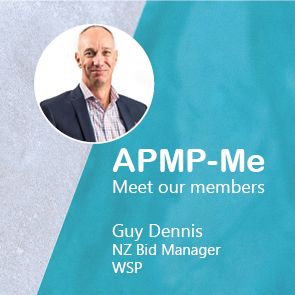Your bids & proposals – On time, On spec (compliant), On budget?
By Jeremy Pollard, Shipley Asia Pacific
‘Pick any two’ is a popular expression in project management. As a project, getting a compliant bid submitted on time suggests your third aspect – proposal budget, e.g. labour and materials – ends up ‘giving’ or being adjusted all the time.
How does this keep happening? According to the BD-Institute, the Number 1 Proposal Management Best Practice – is that the ‘offering and other competition baselines be in place before kicking off the proposal’. And, that the majority of practitioners saw this best practice as “critically important”. So far, so good.
Yet, 30% reported only “seldom, if ever used” or “occasionally used” implementation of this practice.
As highlighted in the 2018 STUDY REPORT – Proposal Best Practices – Importance versus Usage – authored by Howard Nutt, Executive Director of the BD-Institute, and Co-Sponsored by the APMP 21st Annual Southern Proposal Accents Conference, and supported by the BD-CMM Community of Practice: “A perennial challenge for proposal managers is having to write proposals around offerings that are still being developed, as it is challenging to describe what has not been defined”
Think about that for a minute. How much wasted time effort, and yes money, impacts your budget in this sort of unproductive effort?
Time and money wasted on poorly managed solutions, bids and proposals is often a result of poor leadership and budget management.
But it’s worse than just money because it also often speaks to a poor, even toxic culture where the team time is disregarded and abused. e.g. a significant consequence of imperfect proposal process is typically sacrificing of after-hours and weekend personal time by team members.
Exceptions? That said, in some organisations, especially smaller teams, there may be situations where people willingly put in extra effort for the common good, sometimes with time-off-in lieu, for example. And various conditions, not always imperfect or immature process or management – for example, a degree of responsiveness to customer or competitor changes – may require adapting or reworking, with little or no notice. Take care to avoid the exception becoming the rule.
How to fix this? The secret to reducing bid and staff impact costs (and winning more bids)?
Start early. Left shift your #winwork efforts, begin discussing and scoping your solution earlier. Intelligent #pursuit or #capture efforts make better proposal planning possible, and the most effective way to reduce money and time wasted over and over again.
And have your teams get back their personal lives again.
But how can I make a difference? Acknowledging this is not the sole responsibility of bid writers or bid managers, what can you do about a problem where the source or cause is another team or group?
Begin with these three steps.
- Do your homework. Collect and collate data with your colleagues about the number and value of the bids and proposals worked on over the last 2/3 years – classified by incumbent Vs competitive. Track the time you’ve been given, and the number of pages of new and boilerplate content involved (more on this in another article) – in particular, where possible, how far from the news of the project and how close to the submission due date was the solution finally locked down and able to be written about properly? Get time with your CFO or finance team and explain what you are doing, and why. Get their support and assistance with sourcing and validating the data and conclusions.
- Engage your stakeholders. Meet and talk with the sales and BD people working with the customers and your technical/product/solutions people – hear their side of the story, practice your best reflective listening – ensure they feel listened to and understood. You are not trying to change their mind, their behaviour – yet. Just listen — document what you hear.
- Encourage and support more pre-tender activity (Capture). Discover what Capture training your sales and BD colleagues have undertaken, and actually put into practice (often a gap). Ask to understand how they feel the process works. Consider steps or aspects where you and your colleagues could add value. Offer to join opportunity assessment and capture or pursuit milestone meetings. Help out with early Capture draft executive summaries.
Read research, papers and books on best practice business development and Capture. Ask to do the same Capture training as your BD and sales colleagues. Keep talking with your stakeholders – including finance – on the benefits of starting earlier – which also helps with more accurate and consistent Price To Win, and superior revenue forecasts.



